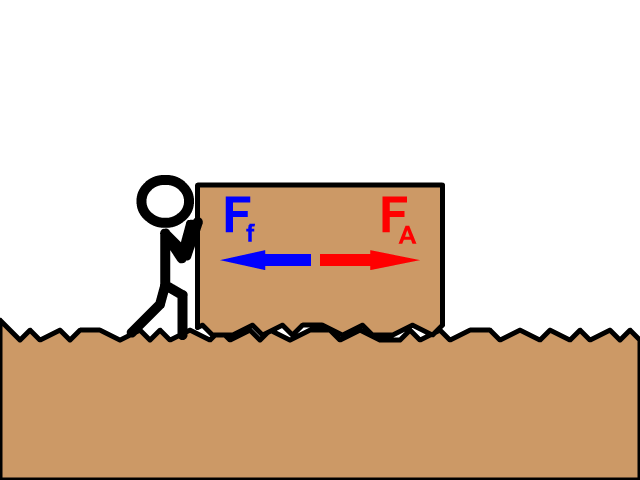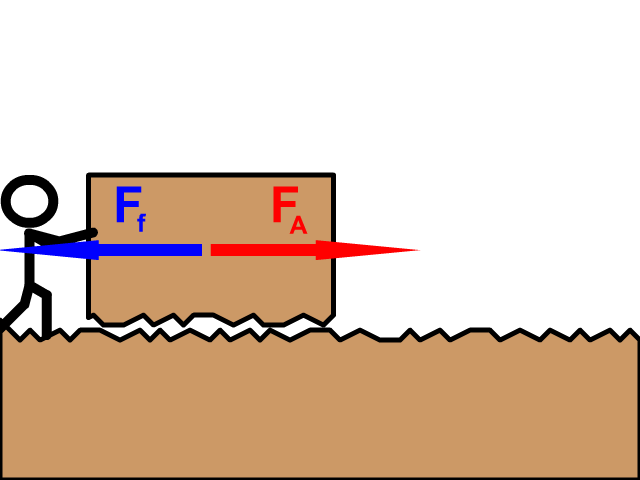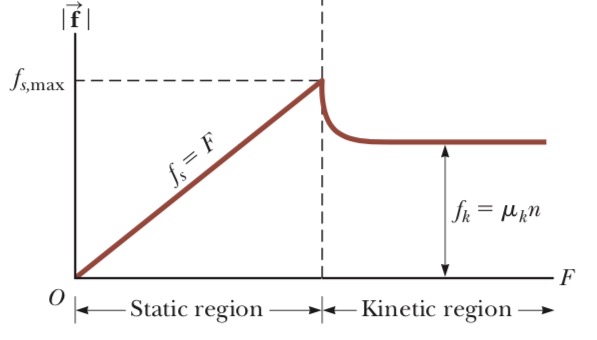Forces of Friction
When an object is in motion either on a surface or in a viscous medium such as air or water, there is resistance to the motion because the object interacts with its surroundings. We call such resistance a force of friction.
Imagine that you try to push the box across the surface of your concrete patio.
 For small applied forces on the trash can, the magnitude of the force of static friction equals the magnitude of the applied force and the box remains stationary.
The force on the box that counteracts `vec(F)` and keeps it from moving is called the force of static friction `vec(f_s)`.
For small applied forces on the trash can, the magnitude of the force of static friction equals the magnitude of the applied force and the box remains stationary.
The force on the box that counteracts `vec(F)` and keeps it from moving is called the force of static friction `vec(f_s)`.
 When the magnitude of the applied force exceeds the magnitude of the maximum force of static friction, the box breaks free and accelerates to the right.
We call the friction force for an object in motion the force of kinetic friction `vec(f)_k`.
The graph of friction force versus applied force.
When the magnitude of the applied force exceeds the magnitude of the maximum force of static friction, the box breaks free and accelerates to the right.
We call the friction force for an object in motion the force of kinetic friction `vec(f)_k`.
The graph of friction force versus applied force.
 Notice that `f_(s,max) > f_k.`
Notice that `f_(s,max) > f_k.`
 For small applied forces on the trash can, the magnitude of the force of static friction equals the magnitude of the applied force and the box remains stationary.
The force on the box that counteracts `vec(F)` and keeps it from moving is called the force of static friction `vec(f_s)`.
For small applied forces on the trash can, the magnitude of the force of static friction equals the magnitude of the applied force and the box remains stationary.
The force on the box that counteracts `vec(F)` and keeps it from moving is called the force of static friction `vec(f_s)`.
 When the magnitude of the applied force exceeds the magnitude of the maximum force of static friction, the box breaks free and accelerates to the right.
We call the friction force for an object in motion the force of kinetic friction `vec(f)_k`.
The graph of friction force versus applied force.
When the magnitude of the applied force exceeds the magnitude of the maximum force of static friction, the box breaks free and accelerates to the right.
We call the friction force for an object in motion the force of kinetic friction `vec(f)_k`.
The graph of friction force versus applied force.
 Notice that `f_(s,max) > f_k.`
Notice that `f_(s,max) > f_k.`
